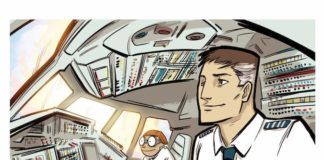One of the bigger aviation stories as 2011 wound to a close was the fact that the FAA was going to start charging for access to digital versions of its chart products: sectionals, en route charts, approach charts, the AF/D, etc. Details were revealed in a meeting with vendors that described a $5 million hole to be filled with subscription fees on apps like ForeFlight and use of websites like RunwayFinder.
Several of us in the industry are digging into the real numbers behind this, but not because we object to paying fair prices for digital versions of the charts we willingly bought on paper. We’re just searching for the real costs behind the prices—something the FAA has been monolithically unhelpful in providing. FOIA requests are in the works.
The digging has turned over a fascinating fact, however: The data behind all those paper products or their digital equivalents comes to the charting office (part of AeroNav) via a digital Form 8260. These source files are available free from the National Flight Data Center and will continue to stay free. The fascinating bit is that the FAA has created software to take the raw data and create a rough version of the final chart, from approach charts to sectionals. These were partly to act as quality control for checking the human-designed charts, but also to streamline the creation process. In fact, if you noticed a drop in the price of sectional charts recently, it was due to automation in production from these very processes.
This means that AeroNav ought to be able to cut quite a bit of staff and overhead because many of the people they have now who create all those charts won’t be needed anymore, right? Except that the first duty of any federal organization is to ensure its own future existence, so that won’t happen. They’ll find ways to justify the current staff and a revenue stream to pay for them. (Hmm, a revenue hole to be filled. This sounds familiar.)
So prices won’t go down (much). Is this too bad? I think not.
The other thing digital Form 8260s mean is that smart app vendors might be able to circumvent AeroNav entirely here. The first portable GPSs in the cockpit created moving maps on the fly from data. These were supplanted by backgrounds of scanned sectionals, and then by stitched-together sectionals, and now by most any paper-equivalent chart you want. Pilots preferred the visual format they knew from paper.
But if the process for creating charts of all kinds can be automated such that they can be created on-the-fly and closely resemble the familiar paper, this could cut AeroNav completely out of the picture—as well as any cost they tack on.
A challenge? Certainly. Compromises? Probably. Error-checking an automated process is not to be underestimated. But there’s a big potential boon here. It opens the door to all sorts of value-add and creating what will finally be a truly digital chart: charts that change what they show depending on scale, flight speed, your preset preferences, what part of an approach you’re on and so forth.
So the move to extract more cash for old-school may be the final impetus for truly new-school products. Will that be a class I want to attend? I’m planning on showing up to find out. —Jeff Van West




